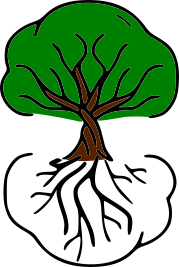A lot of people ask me what it is actually like to live in the North Cascades ecosystem during my graduate residency. While I could offer my journals, papers, observations, and all of the books I have read, my residency is best shown through these seven pictures:
Say hi to my cohort! The 15 of us became more than just classmates. Even though I was living 30 minutes closer to civilization than most of the cohort, I didn't have any time to connect with any other social group. My cohort is my class, my friends, my support group, the people who I rant to, the people who I rant about, but most of all 14 reasons why I was able to complete this residency.
Speaking of my cohort, each of us are incredibly weird. We have everything from a math teacher to a bicycle junkie. Holli, an entomologist, developed a bug program to teach the public about her passion. Within the first days of meeting everyone in June she asked for a volunteer in her bug program to the cohort. I jumped to the opportunity, not entirely sure what it entailed. After a half hour of trying to fit into rare costume parts, I was transformed into the spectacular bug you see above!
When the sun is out, our classes are outside. Even 3 hours by life flight away from any hospital, with the 70 lbs of supplies on my back, we are constantly learning. By engaging with the outdoors as a cohort we are able to support one another in our learning and keep up the positive attitude! (By the way, thanks Emily for encouraging me at this spot. If my memory serves me I was ready to just roll down the hill for the rest of the day).
This residency was not just in the mountains, however. The larger North Cascades ecosystem includes the mountains, the Salish Sea, and everything in between. We got to dive headfirst (literally) into lakes, rivers, swamp patches, and snow fields to see how they are all connected. After a few months of phenologizing (one of the buzz words in the cohort) we started to see patterns in the ecosystem as a whole.
This residency has taught me to notice the stories in the ecosystem. On spring break I was Grinneling (fancy naturalist type of journaling) on the Oregon coast when I found this little crab. Using the tools I had already learned, I started to connect and observe this little creature. Taking the time to stop and connecting to my non-human neighbors helps develop me as a professional and enrich my own human experience.
Not everything in the residency is fun, easy, or even enjoyable. Forest fires caused us to evacuate our home and move multiple times. We were constantly trying to fit in teaching, work study, school work, and also being told to embrace kairos and naturalize. The first five pictures are amazing snapshots but most of the year was spent working hard, always having some form of stress. Why would I intentionally put myself through this much? Wouldn't it be easier to get my degree somewhere else? Why did I have to revolve my life around my work?
"Unless..."
"Unless someone like you cares a whole awful lot. Nothing is going to get better, its not."
When I place down silent hike cards on the last day of each session of Mountain School, I always end the hike with this quote from the Lorax. This world has so many problems that are interconnected. By teaching people about the environment, I hope to spark empathy, love, and peace in my students. A systematic approach to teaching and learning is how I believe many of our problems, from climate change to racism, will be solved.
By putting myself under such extreme heat and pressure, I hope my career as an environmental educator becomes the foundation of metamorphic rock able to support the mountain ranges of knowledge and passion that my students have.








